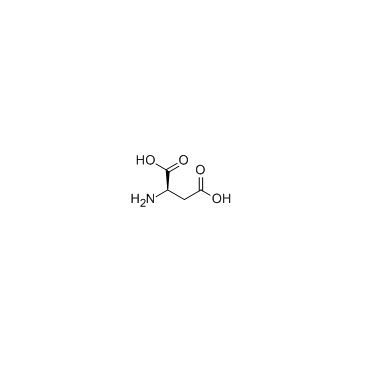Biochemistry of D-aspartate in mammalian cells.
H Homma
文献索引:Amino Acids 32(1) , 3-11, (2007)
全文:HTML全文
摘要
Recent investigations have shown that D-aspartate (D-Asp) plays an important physiological role(s) in the mammalian body. Here, several recent studies of free D-Asp metabolism in mammals, focusing on cellular localization in tissues, intracellular localization, biosynthesis, efflux, uptake and degradation are reviewed. D-Asp in mammalian tissues is present in specific cells, indicating the existence of specific molecular components that regulate D-Asp levels and localization in tissues. In the rat pheochromocytoma cell line (PC12) and its subclones, D-Asp is synthesized intracellularly, most likely by Asp racemase(s). Endogenous D-Asp apparently has two different intracellular localization patterns: cytoplasmic and vesicular. In PC12 cells, D-Asp release can occur through three distinct pathways: 1) spontaneous, continuous release of cytoplasmic D-Asp, which is not associated with a specific stimulus; 2) release of cytoplasmic D-Asp via a volume-sensitive organic anion channel that connects the cytoplasm and extracellular space; 3) exocytotic discharge of vesicular D-Asp. Under certain conditions, D-Asp can be released via a mechanism that involves the L-Glu transporter. D-Asp is thus apparently in dynamic flux at the cellular level to carry out its physiological function(s) in mammals.
相关化合物
| 结构式 | 名称/CAS号 | 分子式 | 全部文献 |
|---|---|---|---|
 |
D-天门冬氨酸
CAS:1783-96-6 |
C4H7NO4 |
|
Coupling substrate and ion binding to extracellular gate of ...
2007-01-25 [Nature 445 , 387-93, (2007)] |
|
Oral administration of D-aspartate, but not L-aspartate, dep...
2014-07-25 [Life Sci. 109(1) , 65-71, (2014)] |
|
Okibacterium endophyticum sp. nov., a novel endophytic actin...
2015-03-01 [Antonie van Leeuwenhoek 107(3) , 835-43, (2015)] |
|
The prostaglandin EP1 receptor potentiates kainate receptor ...
2014-10-01 [Neurobiol. Dis. 70 , 74-89, (2014)] |
|
D-Aspartate acts as a signaling molecule in nervous and neur...
2012-11-01 [Amino Acids 43(5) , 1873-86, (2012)] |